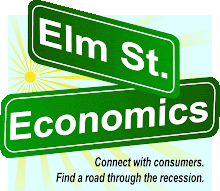Secondly, numerous reports seem to indicate that the consumer is feeling better about the future than they have in more than a year… with emphasis on the confidence they have in their personal financial situation. One story, which I found in Marketing Daily, suggested that only about a quarter of consumers fear their financial situation will worsen in the next twelve months (down from 30% in November), and about 32% of consumers feel their fortunes will improve in the next year (up from 29% in November). That is based on research from Synovate.
Yet another report, this one from Research Brief, cites a Harris poll that said 46% of Americans believe the economy will improve in the coming year, while 32% say it will stay the same and 22% believe it will get worse. That’s a strong improvement from a similar study in May.
Implications: Mining and manufacturing are among the first steps in a product life cycle, and purchasing/consumption represents the end of that cycle, for many products. These “bookends” of good news can only mean positive new for everything in between. As a backdrop for that optimism, let me suggest why I’m cautiously optimistic… starting with my optimism:
- Layoffs and new jobless claims have begun to moderate (consumer confidence starts with the feeling of secure employment). As a result, consumer confidence seems to have stabilized.
- Stocks are seeing sustainable rallies (rather than the severe swings of last fall/winter).
- Housing starts have remained low (which is good, because more inventory would not heal an already over-supplied real estate market).
- The stimulus money is beginning to show-up in the form of paychecks in pockets.
The reasons that, while I am very optimistic, I remain cautious:
- The pace of new hires is still a bit slow. (Some warn of slow labor rebound, aka a jobless recovery.)
- There could be more than one bottom to the recession; instead of looking for “the recovery,” you might be wise to expect a series of recoveries. (Due in part to low commodity prices, as I’ve written previously.)
- The “new attitude of frugality” could out-last the recession, and to some extent, subdue the recoveries. (A significant share of our GDP is based on consumer spending.)
- Technically speaking, a recovery won’t be made “official” until up to a year or more after it has begun. (As I’ve written in this space before, recessions and recoveries are determined based on historic data, and it can take that long for economists to determine when a turnaround actually started.)
To my way of thinking, all of this means one thing. Neither “sitting it out” or “wait and see” are smart strategies in response to the current economy. The smart money is on understanding consumer wants and needs—and how they rationalize a purchase in your category—and then marketing to those purchasing priorities.
Consumers have cut back… there’s no doubt about that. But while most of us are showing restraint, overall, each of us has “exceptions to the rule” where we still buy, even if the purchase might be thought of as indulgent. Your job is to figure out how to become one of those “exceptions to the rule.”



No comments:
Post a Comment